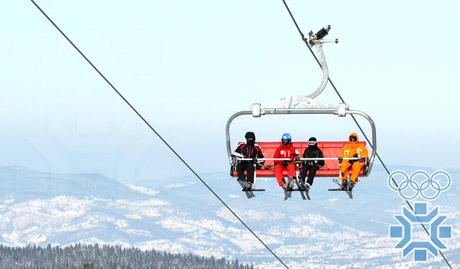TOURISM INDUSTRY. As skiers in the region eagerly await the first major snowfall, winter resorts are making preparations in hopes of increasing visitor numbers, despite the economic crisis.

Olympic center Jahorina, Bosnia and Herzegovina
Many serious ski lovers will spend their holidays abroad, especially in Slovenia and Austria. But a large number will be forced, by economic constraints, too look for resorts closer to home, officials said.
Almost all of the region's large cities, with the exception of Belgrade, lie within 50 kilometres of a ski resort. Sarajevo has the Olympic Mountains of Jahorina, Igman and Bjelasnica and Banja Luka has Kozara, Vlasic and Kupres. The nearest slopes to Belgrade are Zlatibor and Kopaonik.
This summer, the resorts prepared slopes and ski lifts, and at some mountains, undertook renovations.
The Jahorina resort in Bosnia and Herzegovina (BiH) added another six-seat chairlift to ensure minimal waiting times at its more than 12,000 metres of ski slopes. An underground garage was also added near the biggest slope, Poljice.
A 21 million-euro renovation programme for Jahorina, which began in 2008 to improve conditions on the slopes and expand tourist offerings, will finish up at the end of this year.
Although there are no estimates for this tourist season, bookings are already on par with last year's, which brought in 1.23 million euros -- putting Jahorina in the top ski resorts in the region.
"With all these improvements, Jahorina will restore the old glory and take a leader position among ski resorts in the region," Zorica Stojanovic, OC Jahorina spokesman, told SETimes.
But the goal is a lofty one in the face of the competition.
Nearby resorts, Bjelasnica and Igman, which are managed by ZOI 84, are linked with Jahorina. The three mountains hosted the 1984 Winter Olympic Games.
The resort management company will invest about 6 million euros this year on renovations. Planned improvements include longer ski runs, adding several restaurants and hotels and upgrades to walking paths and other recreational facilities.
"In accordance with our investments, we expect more tourists this season. They will have the best conditions for skiing," Muamera Sehic, ZOI 84 spokeswoman, told SETimes.
After the 1990s conflicts, the three were split -- Jahorina went to Republika Srpska and the other two to the Federation of BiH.
Sehic said she hopes the mountains will join as a common enterprise again. Integration makes sense, she said, because all three are part of the same mountain chain, but are divided by entity lines.
"It depends on the politicians; they must recognise that it is necessary. We have already had good co-operation, maybe next year we will issue joint ski passes for all three resorts," said Sehic.
Kopaonik ski resort, managed by Ski resorts of Serbia, also expects a better season.
As Ana Jovanovic, spokesperson of Ski resorts of Serbia, said that last season on Kopaonik was successful. The resort sold 108,000 ski passes -- 30 percent more than in 2010. Kopaonik, along with the Zlatibor and Stara Planina resorts, all of which are under the Ski resorts of Serbia management, brought in 4.2 million euros last year.
"Ski runs on Kopaonik are fully covered by snow cannons, so we don’t depend on natural snow at all," she told SETimes.
Skier Dusko Maric from Banja Luka told SETimes that this season, as before, he plans to go skiing but has not decided where.
"Resorts in region have an advantage because they are not so far away. But they cannot yet compete with resorts in Austria, Italy or Slovenia," Maric said.
Maric said, however, that if they continue with improvements, regional resorts could give EU resorts a run for their money.
By Mladen Dragojlovic
for Southeast European Times (SETimes.com)
in Banja Luka, 09/11/2012

| 

